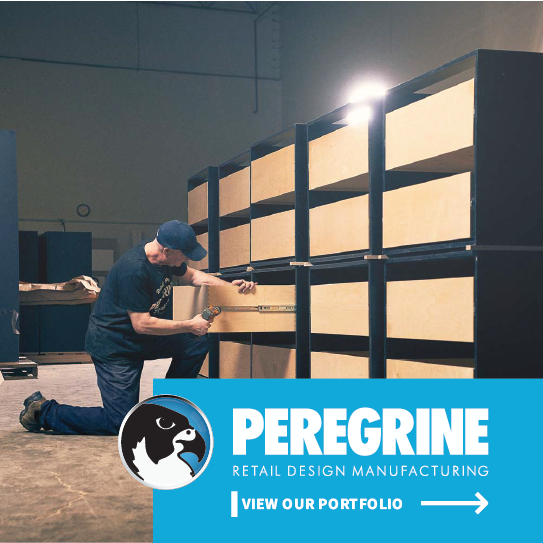Why Canadian Retailers Need to Embrace the Tech Revolution
/By DeAnn Campbell
The closing of the final Sears Canada store left millions of square feet of empty retail space on the market. Meanwhile, Canada’s lowest unemployment rate since 1976 means the competition for labour is tougher than ever. As if that weren’t enough, pressures from Amazon’s online market and international brands entering Canada at a record clip have Canadian retailers fighting against the stiffest competition they’ve seen.
Political factors, too, have retailers on edge. The new North American trade deal, the USMCA, could benefit exports and investment — but only if it actually comes to pass. Given the chaotic state of the U.S. government, Canadian companies can’t just wait to see whether legislators provide the help they need.
Instead, Canada’s retailers must turn to technology to guide them through an uncertain future. Only by embracing new tools and processes can Canadian businesses hope to thrive in a rapidly changing retail ecosystem.
Falling Behind the Times
Canada has so far been slow to adopt in-store technology. IDC Canada found that 77 percent of Canadian retail companies have no defined strategy for technological innovation. In a digitally driven world, that lack of foresight could be deadly.
Further research from the Information and Communications Technology Council suggests that one of the principal reasons for Canada’s conservative streak is the lack of skilled workers available to assess and implement technological innovations. Canadian retailers are hardly the only ones struggling with the digital talent gap. Organizations must find ways to innovate, evolve, and compete if they expect to make it through 2019 and beyond.
For brick-and-mortar retail stores, data analytics should be a top priority: data-driven insights guide nearly every sector of today’s economy. Yet, IDC found that only 32 percent of Canadian enterprises see the Internet of Things as an important part of maintaining a competitive advantage. Unless retailers get with the times, tech disruptors like Amazon will continue to eat their lunch.
When retailers do adopt and interpret analytics, they discover a whole new world of opportunities to create meaningful, impactful customer engagement. This is the first step toward aligning the online and in-store customer journeys to create one harmonized brand experience. Human-centric interfaces in e-commerce, in-store conveniences like pickup lockers, and real-time inventory monitoring all contribute to a smarter retail strategy.
How Canadian Retail Can Catch Up
To keep up with the technological revolution and to meet the expectations of increasingly demanding consumers, Canadian retailers should follow a few best practices when implementing technology:
1. Realign expectations.
Technology will never be the main focal point in brick-and-mortar stores. However, technology working behind the scenes and on the front lines in stores will elevate the shopper experiences that trigger purchases and, equally important, free up already overtaxed staff to focus on customers.
Gartner’s research shows that worldwide retail tech spending will surpass $200 billion this year. To make that technology work, retailers need people who know how to work it. Human resources departments should begin recruiting efforts with local technology schools and universities to bring in employees who understand how to develop and implement technology adoption strategies.
2. Master the brand strategy.
Know your customers, know your brand. Retailers need to know who their shoppers are, what their purchase journeys look like, and where opportunities for improvement lie. That includes everything from fulfillment and distribution networks to advertising and marketing tactics. Only with a clear view of the whole picture can retailers understand their technology options.
I recently spoke to a client that wanted to add pickup lockers to its stores but had failed to consider how this new offering would function. Would in-store stock or distribution centers fill the lockers? Did staff have time to handle the extra duties? What would the pickup notification look like? After realizing all the work yet to be done, this retail leader revised the implementation date to allow more time to plan.
3. Evaluate vendor options.
With the digital talent gap so wide, retailers cannot realistically expect to staff full tech departments quickly, and adding this function in-house could potentially distract from focus on merchandising. That means they must rely on tech vendors that understand the industry, their needs, and their options.
Retailers should be cautious before diving into any new partnership. Plenty of vendors offer options like kiosks, lockers, and software platforms, but not all have the experience or know-how to help retailers make the most of those solutions. If the vendor does not offer a free discovery session prior to engagement in order to understand goals, customer needs, operational realities, and budget, the retailer should look elsewhere.
4. Keep maintenance in mind.
Technological implementations are not one-and-done affairs. How will the retailer maintain and service its in-store tech after installation? Many companies overlook or skip this step during budgeting and contract execution. In fact, our in-house research has revealed that most major retailers have multiple nonfunctioning displays in most of their stores. But dark screens and nonfunctioning tech can cause customers to lose trust in a brand and permanently take their business elsewhere.
One Forbes columnist tried to compare the typical in-store experience to an online one. She found an ice cream maker she wanted, but the product had no price and the nearby price scanner was broken. She walked across the store to customer service and learned the price, but customer service could not answer questions about how the product worked. A quick search on her phone turned up negative reviews, so she left empty-handed.
Canadian retailers are no longer just competing with one another. Today, they compete with smartphones, Amazon, and companies from all over the world. With the pressure higher than ever, the retailers that emerge victorious will be the ones with the best technology strategies.
DeAnn Campbell is convinced that the next evolutionary era heralds a shift beyond converged commerce to Harmonic Retail,™ where online and offline experiences don’t merely integrate, but they interact, enrich, and react upon one another to create a living, harmonized brand expression throughout the customer journey. DeAnn holds a Bachelor of Architecture, is LEED ID+C accredited, and currently heads up retail strategy and research at Harbor Retail.
















![L.L.Bean Continues Canadian Expansion with 1st Toronto Store [Photos]](https://images.squarespace-cdn.com/content/v1/529fc0c0e4b088b079c3fb6d/1603908990197-KDT3UNTEHFBFJF5FJ36N/L.L.Bean_Don_Mills_8.jpg)



![Retail-insider-NRIG-banner-300-x-300-V01-3[2].jpg](https://images.squarespace-cdn.com/content/v1/529fc0c0e4b088b079c3fb6d/1593476525034-QRWBY8JUPUYFUKJD2X9Z/Retail-insider-NRIG-banner-300-x-300-V01-3%5B2%5D.jpg)
![Retail-insider-NRIG-banner-300-x-300-V01-2[2].jpg](https://images.squarespace-cdn.com/content/v1/529fc0c0e4b088b079c3fb6d/1593476491497-W6OZKVGCJATXESC9EZ0O/Retail-insider-NRIG-banner-300-x-300-V01-2%5B2%5D.jpg)
![Retail-insider-NRIG-banner-300-x-300-V01-4[2].jpg](https://images.squarespace-cdn.com/content/v1/529fc0c0e4b088b079c3fb6d/1593476508900-TJG5SNQ294YNOCK6X8OW/Retail-insider-NRIG-banner-300-x-300-V01-4%5B2%5D.jpg)